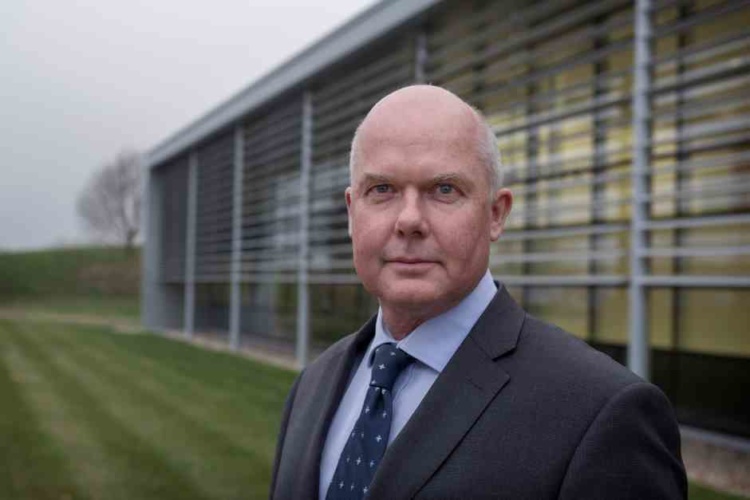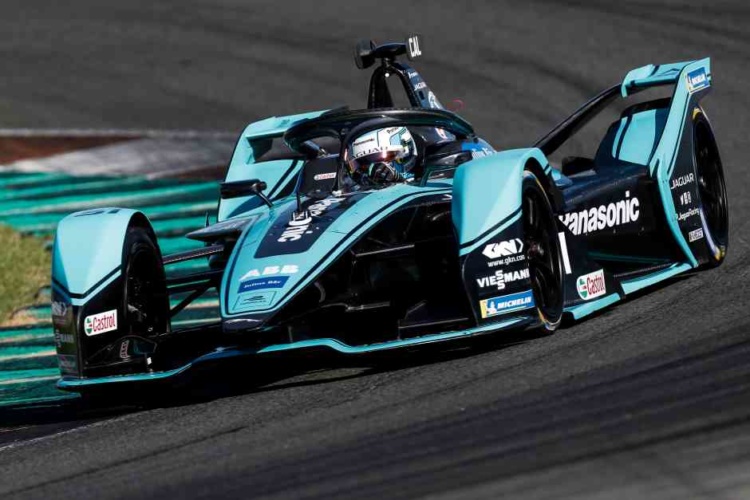As a relatively young company Williams Advanced Engineering knows a thing or two about developing disruptive technology and it is using its know-how to help others realise their potential too.

The Engineer is clearly keen to learn more about how WAE is sharing its expertise but, as is often the way, the spectre of a non-disclosure agreement (NDA) makes itself known and an enquiry into Additive Manufacturing Technologies (AMT) - a company bringing 3D printing into the realm of mass production whilst addressing shortcomings experienced during post-processing of parts – is shelved for now.
AMT counts Foresight Williams Technology EIS Fund as an investor, which itself is a collaboration between the Foresight Group and WAE, the technology and engineering services business that looks set to reach its full potential under EMK.
EMK acquired a majority stake in WAE from parent company Williams Grand Prix Holdings in December 2019. It was a deal that raised capital for the Williams F1 team and, according to WAE managing director Craig Wilson, allowed WAE to invest in its core technologies and IP.
“We recognised at board level [that] Williams Advanced Engineering had been…subdued in its ability to really grow and exploit technology development through lack of investment,” he said. “We were doing, and have done, quite well with some modest investments… but we really needed to be able to ratchet it up.”
Williams Grand Prix Holdings retain a minority stake in WAE which in 2010 joined Jaguar as a development partner on the C-X75, an all-wheel drive, plug-in parallel hybrid electric vehicle (PHEV) with – in the words of Jaguar - the world’s highest specific power engine. C-X75 also marked Jaguar’s first foray into using a carbon composite monocoque chassis.
“There were five functional prototypes built and we had a complete integrator role in that programme and specific responsibility for the power train, the electric propulsion system development amongst the aerodynamics and everything else…which encompasses the battery systems work.”
Despite the promising start, Jaguar decided against taking the C-X75 to market due to what is saw as unfavourable global economic conditions.
“Until the Bond film Spectre no one really saw it, unless you were an enthusiast,” said Wilson. “It was never really talked about.”

The good news for the young company was that Formula E wanted them to produce batteries for every car in the new race series, which gave them an opportunity to ‘really put something out there as a product, showing our skills and capabilities’. The bad news was that they only had 12 months to deliver a 50kW/h battery system that could be airfreighted around the world to freight certification standard UN38.3, be able to withstand some challenging thermal conditions on route and in terms of where some of the races were being held, and ultimately develop a system worthy of a high-speed race series that began in Beijing in September 2014. As a measure of WAE’s success, in four years only two cars paused to stop during a race, and they were both due to a loose connector on a bumpy track at Long Beach, California.
“Not only was [Formula E] a foundation project for a very young company, it demonstrated our very high engineering skills in that area,” said Wilson. “To produce the product that we did - and the package base was already defined - and to have the reliability that we had was really astounding. I think that even Alejandro Agag was on record as saying that Williams Advanced Engineering was the reason his Formula has become a success…without Williams Advanced Engineering there would be no Formula E.”
During their time with Formula E WAE learned how to push the limits of battery management after a request to increase battery performance over three consecutive years.
“We developed from years three and four a very advanced prognostic capability, where we were able to detect early – and we’ve used it as a development platform – the degradation of the batteries, in particular down to an individual cell level,” Wilson said. “We believe that the ability to be able to proactively diagnose early issues is going to be even more critical in the future, particularly if you talk about batteries that are going to be powering products that will fly. Or in certain service applications where you don’t want a vehicle being stuck halfway up a mine ramp.”

Wilson added that WAE has gone onto to participate in ‘dozens and dozens of battery related projects’. Formula E set WAE in good stead when tasked with developing the battery pack for the ETCR (Electric Touring Car Racing) programme in an seven month window.
The company’s expertise came to the fore also with Hyperbat Ltd, a joint venture with Unipart that launched in 2018 with the aim of creating the UK’s largest independent vehicle battery manufacturer.
WAE saw Hyperbat as way of protecting one of it core areas of engagement with industry - designing and validating battery systems – whilst Unipart was looking to protect its manufacturing businesses from a future decline in internal combustion engine systems.
Hyperbat’s launch project delivered the 800V battery for the Aston Martin Rapide, which was the marque’s first electric vehicle and the only venture Wilson could elaborate on.
“The other four projects that are currently active are all, unfortunately, under NDA. Two of them are very, very significant,” he said. “I will leave it at that.”
WAE’s expertise in fields including aerodynamics, advanced lightweight structures, propulsion systems, and simulation have lent themselves to numerous projects that have helped customers in industries ranging from defence to retail.
With EMK at the helm, WAE is in position to move its own ideas toward commercialisation. Travelling along the route map of TRL are 223, a process developed to post-cure carbon fibre joints, and Racetrack, a process initially developed to produce suspension wishbones but with up to 80 per cent recycled carbon fibre and 40 per cent less weight than equivalent metal parts.
As a ‘sector agnostic’ company WAE is in position to help identify and nurture those companies that have received investment from the Foresight Williams Technology Fund.
“We undertake…quite a lot of the scouting for those technology investment opportunities, and we undertake the technical due diligence and in a number of cases we also provide technical support services to help those young companies grow,” Wilson said. “That’s the journey. In some cases they need just some straight money and in some cases they need some management support, in some cases they need maybe some technical support, as well, or a combination of all three.
MORE FROM THE ENGINEER
Williams and Unipart form new UK battery maker
“In the case of AMT, we… were sufficiently impressed with their…processing and materials combination to feel that it’s viable…This is one that we think has got real legs to it, so hence why we made the investment.”
As a relatively young company itself, Wilson said that every project undertaken by WAE is a ‘voyage of discovery’ but that it is well positioned to flourish.
“We’ve got a very stable workforce, we’ve grown substantially over the last few years, but we also have a very, very low turnover of staff so we retain a lot of that knowledge and you continue to just improve,” he concluded.










Water Sector Talent Exodus Could Cripple The Sector
Maybe if things are essential for the running of a country and we want to pay a fair price we should be running these utilities on a not for profit...